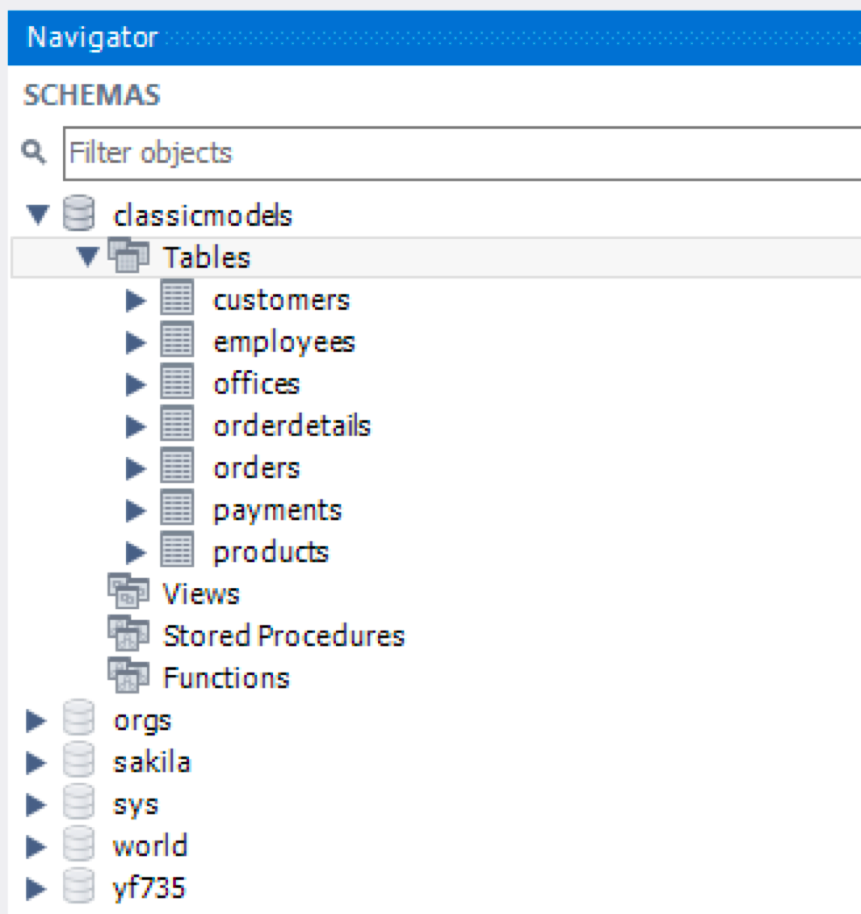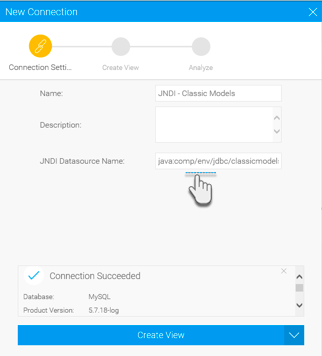
From versions 9.8.1, JNDI data connections will be disabled by Default. The option can be restored by setting an advanced configuration option.
Click here for instructions.
Along with various other data source connections, Yellowfin also provides you with the option to create a JNDI (Java Naming & Directory Interface) data source. This type of connection can be used for a number of reasons, including migrating your application between different environments, such as development, integration, test or production, or connecting to an external directory service.
A JNDI data source connection is set up outside of Yellowfin. You will need to reference a connection to a database in an external configuration file in Tomcat, where all the database settings are set up.
In our example, we will use a MySQL database, named "classicmodels", to establish a JNDI connection with.

To declare a JNDI Data Source for the MySQL database above, create a Resource XML element with the following content:
<Resource name="jdbc/classicmodels" auth="Container" type="javax.sql.DataSource" maxActive="100" maxIdle="30" maxWait="10000" driverClassName="com.mysql.jdbc.Driver" url="jdbc:mysql://localhost:3306/classicmodels" username="root" password="root" /> |
Add this element inside the root element <Context> in a context.xml file. There two locations where the context.xml file can reside (create one if it doesn't exist):
Add the following declaration into the web.xml file (appserver\webapps\ROOT\WEB-INF\web.xml):
<resource-ref> <description>DB Connection</description> <res-ref-name>jdbc/classicmodels</res-ref-name> <res-type>javax.sql.DataSource</res-type> <res-auth>Container</res-auth> </resource-ref> |
This is necessary in order to make the JNDI data source available to the application under the specified namespace jdbc/classicmodels.
We can look up the configured JNDI data source using our example of jdbc/classicmodels and referring context via java:comp/env, for example:
java:comp/env/jdbc/classicmodels
